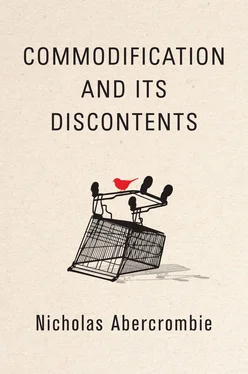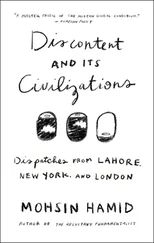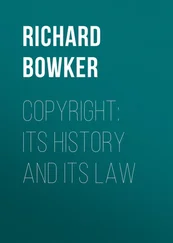Very many years ago, Stephen Hill, Bryan Turner and I wrote a book called The Dominant Ideology Thesis from which are derived several of the ideas in the present book. I am very grateful to both, not only for that book, but also for a productive collaboration over a dozen years or more and a lasting friendship. More recently, several people have helped with their special expertise. Joe Abercrombie has shared his detailed knowledge of Star Trek , Rob Abercrombie has taught me about the relationship of charitable organizations to the market, Adam Roberts has educated me about science fiction, Andrew Sayer pointed me towards the literature on moral economy, Boyd Schlenther introduced me to work on the sacred, Michael Tichelar spent much time talking about town planning, and John Troyer and Tony Walter of the Centre of Death and Society at Bath University got me started on the human body. Over the period in which I have been writing this book, Bath University has generously provided me with an academic home for which I am very grateful. Four friends – Bren Abercrombie, Richard Little, Michael Tichelar and Linda Watts – have been foolish enough to agree to read the entire manuscript and I am very grateful to them for their friendly advice. Polity’s anonymous readers very kindly and helpfully commented on early drafts of the book. Polity’s staff – Jonathan Skerrett, Karina Jákupsdóttir and Rachel Moore – were uniformly calm, considerate and effective, and Fiona Sewell made a magnificent job of copy-editing the manuscript in a very short time.
Most important of all, Bren has been the perfect best friend for time out of mind – endlessly supportive, quick to make sense out of my ramblings and always willing to help both to talk about the ideas and to wield her publisher’s pen.
John Self, the central character of Martin Amis’ novel Money , lives in a world of money, having it or not having it, having a great deal of it but trying to get more, thinking about it and talking about it. Money almost constitutes his world, it seeps into its interstices, it flows , it surrounds in its liquidity. As John Self says: ‘In my day, if you wanted, you could just drop out. You can’t drop out any more. Money has seen to that. There’s nowhere to go. You cannot hide out from money’ (Amis, 2005: 153). But, at the same time, a moneyed world of this kind is unreal. It presents a surface appearance of ease, of luxury, of plenitude. John Self is able fully to indulge his gargantuan appetites for food, sex and alcohol. But underneath this surface, there is both deception and corruption. Self is systematically and intentionally deceived by almost every person he comes across, to the point that he loses all his money. At the same time, the pursuit of his excesses, particularly alcohol, destroys him as a person. There is redemption at the end of the book but that requires the loss of his money together with the realization that money will not buy a life that is morally or spiritually satisfying. Self muses: ‘Maybe money is the great conspiracy, the great fiction. The great addiction too: we’re all addicted and we can’t break the habit now … You can’t get the money monkey off your back’ (Amis, 2005: 384).
Amis’ novel was originally published in 1984, in a period characterized by a strong – and negative – public interest in money. In a single year, 1987, the play Serious Money by Caryl Churchill, the film Wall Street and Wolfe’s novel Bonfire of the Vanities all appeared. But that interest has hardly abated since, especially following the financial crisis of 2008. Not a day passes when there is not a story about money and its misuse in newspapers, on television, in blogs or in social media. There has been a positive deluge of books on various features of the crisis, its causes and consequences (for example, Kaletsky, 2010; Lanchester, 2010; Tett, 2010; Lewis, 2011). Meanwhile, fictional representations of money in novels, plays and films continue to reinforce the sensation that there is a cultural problem in our societies that affects individuals and institutions and that is something to do with money.
I want to refer to all this discussion of money in newspapers, radio, television, film, novels, poetry and popular music as ‘Money Talk’. However, the appearance of Money Talk is not just restricted to these media. It also saturates everyday life. We talk about how much things cost or how much – or little – money we have. We compare our financial circumstances or spending habits with those of friends or neighbours. We speculate on the ways of the rich or the poor. We discuss the use of money by persons and institutions in the public eye. Metaphors, images and sayings involving money abound. We say that ‘the rich get richer and the poor get poorer’, ‘money for old rope’ or ‘in for a penny, in for a pound’. Somebody else has ‘money to burn’ but, on the other hand, ‘money doesn’t grow on trees’. ‘A fool and his money are soon parted’ but ‘money doesn’t buy you happiness’. The very word for money comes in so many different forms in English – dosh, dough, sovs, scratch, mazuma, gravy, spondulicks, bread, wad, moolah, folding green – and these synonyms themselves imply so much behind the simple metaphor, especially in the association of money with food. Much of this Money Talk effectively involves, implicitly or explicitly, moral judgements about human greed, the way that money is used as a yardstick of behaviour or that everything can apparently be bought and sold. These moral judgements are typically hostile; it is the evils of money that are emphasized rather than any benefits that its use might bring.
Perhaps, though, all this talk about money in the late twentieth and early twenty-first centuries is only prominent because of a sense of economic crisis. As John Lanchester points out in his How to Speak Money (2015), while the economy is calm, there is less need to understand economics. However, Money Talk has, in fact, a very long history – and that, in itself, is a sociological puzzle. A serious account of that history is well beyond the scope of this book – and may be a foolish enterprise in any case (but see Jackson, 1995; Buchan, 1997; and for shorter accounts, Martin, 2014: ch. 10; Plender, 2015: ch. 1). But even a casual sampling of the literature of past periods shows a remarkable similarity in the way that Money Talk is mobilized across the centuries. The Bible, of course, is a rich, if inconsistent, source of Money Talk which has informed the writing of subsequent centuries. Some sixteen of the forty parables of Jesus concern money. The Gospels and the Epistles more generally are similarly full of familiar comment on the destructive power of riches, such as: ‘It is easier for a camel to go through the eye of a needle than for a rich man to enter the kingdom of God’ (Matthew 19:24) or ‘Ye cannot serve God and Mammon’ (Luke 16:13) or ‘Go to now, ye rich men, weep and howl for your miseries that shall come upon you’ (James 5:1). The Graeco-Roman world played a similarly significant role in forming the views on money of future generations. The story of King Midas has provided a cautionary tale for centuries. Aristotle’s opinions on usury were influential in medieval Christian doctrine. He condemned usury as ‘hated’ and a practice ‘which makes a gain out of money itself, and not from the natural use of it’ since ‘money was intended to be used in exchange, but not to increase at interest’ (quoted in Jackson, 1995: 244). Similarly, prohibitions on the practice of usury occur throughout the Koran and the restriction is still widespread in Islamic countries. As it declares, ‘whoever returneth to usury, they shall be the companions of hell fire, they shall continue therein for ever’ (quoted in Jackson, 1995: 248). Shakespeare takes up the theme of usury in his The Merchant of Venice , while dealing with another vice of money in Timon of Athens (act 4, scene 3, later used by Karl Marx in Capital ). In the latter play, gold:
Читать дальше












